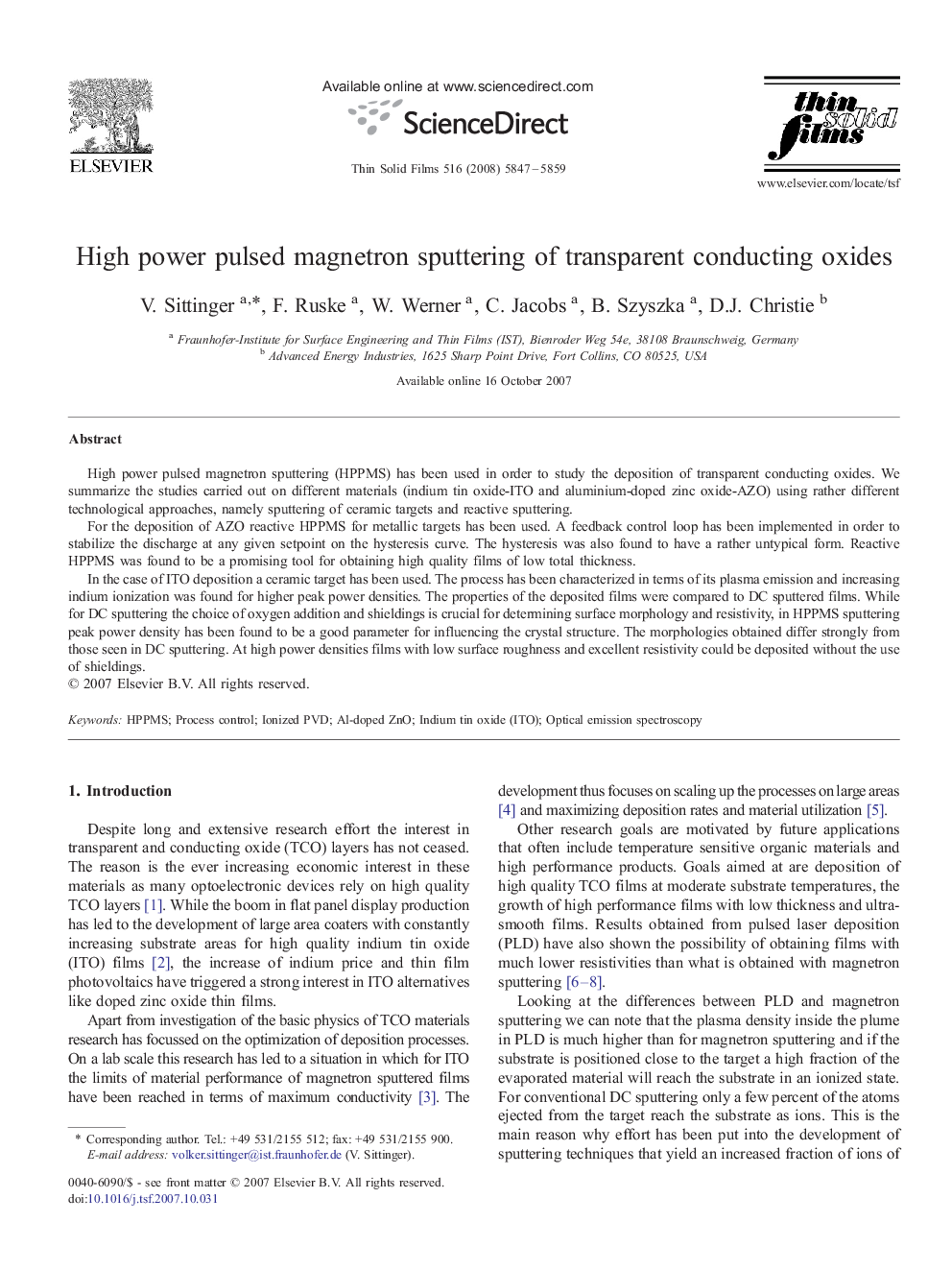| Article ID | Journal | Published Year | Pages | File Type |
|---|---|---|---|---|
| 1674601 | Thin Solid Films | 2008 | 13 Pages |
High power pulsed magnetron sputtering (HPPMS) has been used in order to study the deposition of transparent conducting oxides. We summarize the studies carried out on different materials (indium tin oxide-ITO and aluminium-doped zinc oxide-AZO) using rather different technological approaches, namely sputtering of ceramic targets and reactive sputtering.For the deposition of AZO reactive HPPMS for metallic targets has been used. A feedback control loop has been implemented in order to stabilize the discharge at any given setpoint on the hysteresis curve. The hysteresis was also found to have a rather untypical form. Reactive HPPMS was found to be a promising tool for obtaining high quality films of low total thickness.In the case of ITO deposition a ceramic target has been used. The process has been characterized in terms of its plasma emission and increasing indium ionization was found for higher peak power densities. The properties of the deposited films were compared to DC sputtered films. While for DC sputtering the choice of oxygen addition and shieldings is crucial for determining surface morphology and resistivity, in HPPMS sputtering peak power density has been found to be a good parameter for influencing the crystal structure. The morphologies obtained differ strongly from those seen in DC sputtering. At high power densities films with low surface roughness and excellent resistivity could be deposited without the use of shieldings.
